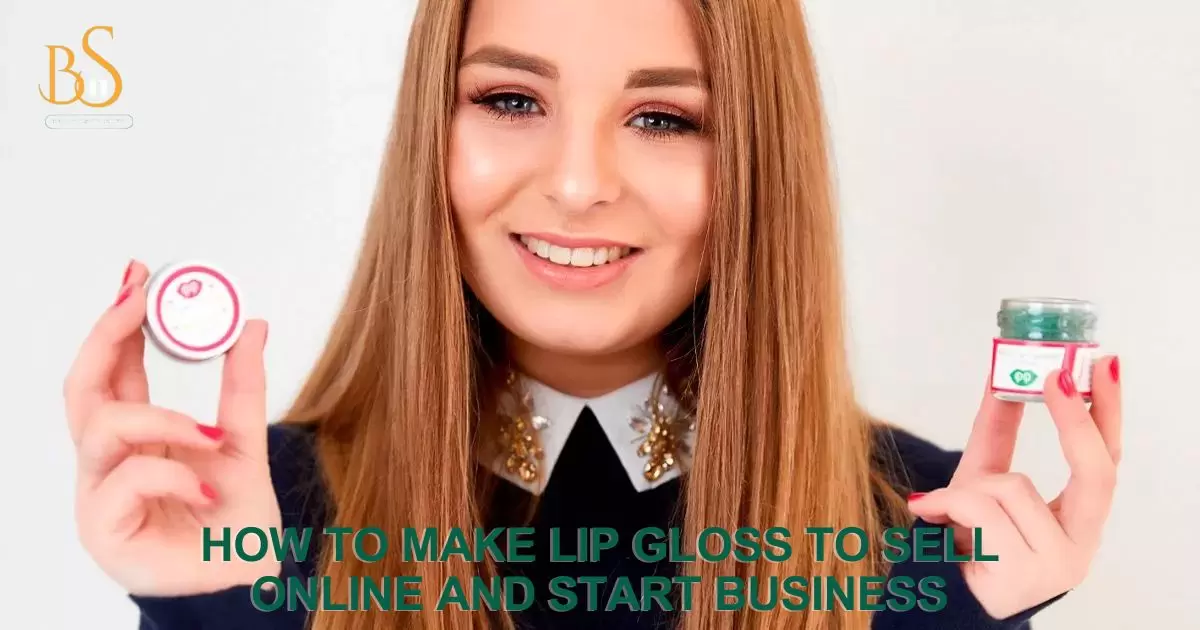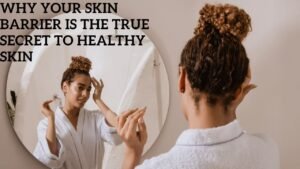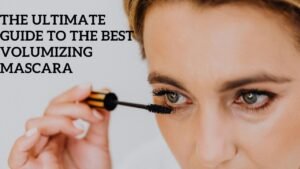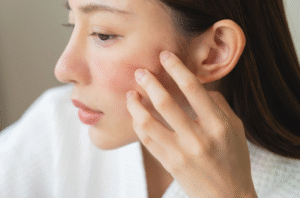Welcome to my guide on how to start your own profitable lip gloss business from home! As an entrepreneur with a passion for cosmetics crafting, I want to share my knowledge to help others achieve their dreams of business ownership.
Whether you have a flair for formulation or an eye for visual branding, custom lip gloss business are a fun and highly profitable product to sell. Their playful colors and enticing scents attract devoted customers looking to pamper themselves with inexpensive luxuries. With the right strategies and dedication to your craft, you can establish a thriving business in this creative industry.
In this extensive blog post, I will cover all aspects of launching your lip gloss venture from concept to customer acquisition. We’ll explore ingredient sourcing, step-by-step formulation techniques for different gloss types, packaging, and labeling best practices. I’ll also provide insights into legal structures, online selling venues, pricing strategies, and marketing channels to find your target audience.
Are you ready to dive in and start mixing up your first lip gloss batches? Let’s get started on your journey toward entrepreneurial success in the colorful world of custom cosmetics. I’m excited to help you every step of the way.
What Are The Different Types of Lip Gloss?
Shimmer Lip Gloss
Shimmer lip gloss contains micro-shimmer particles that add subtle shine and sparkle to the lips. This type of gloss is perfect for creating a high-gloss, glamorous look. Mica is often used to add a shimmering effect in a variety of shades like gold, silver, and rose gold.
Pigmented Lip Gloss
Pigmented lip glosses are more opaque and contain color pigments that tint the lips. They offer medium to full coverage in vibrant shades. These glosses add richness and depth of color to the lips without being overly shiny.
Sheer Lip Gloss
Sheer glosses have a very lightweight, liquid-like texture that feels moisturizing on the lips. They contain minimal color and pigment, allowing the natural lip color to still show through. This type of gloss is good for a wash of subtle shine and glossiness.
Glitter Lip Gloss
Glitter glosses contain fine iridescent glitter particles throughout. They create a high-impact look with lots of sparkle and luminosity. The glitter can range from subtle and soft to dramatic, in-your-face sparkle. This gloss type is best for partying or special occasions.
Matte Lip Gloss
Unlike traditional glosses, matte versions have a velvety-matte finish without shine or gloss. They contain ingredients that absorb oil on the lips, leaving a powdery, soft-matte result. Matte glosses offer full coverage of color without any slip.
Hydrating Lip Gloss
Formulated with nourishing oils and antioxidants, hydrating glosses soothe and moisturize lips. These are a great everyday option for those with dry lips looking for comfort along with a wash of shine and color.
What Do You Need To Make Lip Gloss?
Ingredients to make lip gloss
The main ingredients needed are wax, oil, and pigment or flavoring:
| Wax | Purpose | Melting Point |
| Beeswax | Adds shine and thickness | -62°C to -64°C |
| Candelilla Wax | Adds shine and thickness | 68°C to 80°C |
| Carnauba Wax | Adds shine and hardness | 83°C to 86°C |
| Oil | Purpose | Melting Point |
| Jojoba Oil | Adds emollience and shine | -20°C to -10°C |
| Kokum Butter | Adds emollience and hardness | 28°C to 35°C |
| Avocado Oil | Adds emollience and nourishment | -15°C to -5°C |
Butter such as shea or cocoa butter can also be added for extra nourishment and thickness to the gloss. Colorants like mica, pigments, or flavorings (for tinted gloss) and essential oils for fragrance are also common. Bentonite clay can be used to add a matte finish.
| Ingredient | Amount | Purpose |
| Beeswax or Carnauba Wax | 5-10% | Adds shine and thickness |
| Jojoba, Kokum or Avocado Oil | 60-80% | Adds emollience and shine |
| Pigment or Flavoring | 2-5% | Adds color or flavoring |
| Fragrance (optional) | 1-3 drops/oz | Adds scent |
| Clay (optional) | 2-5% | Adds matte finish |
Equipment to make lip gloss
Some basic equipment is required:
- Melting container: A double boiler setup works well for gently melting ingredients without overheating. A glass or stainless steel bowl that fits over a small pot works.
- Heat source: A stovetop, electric hot plate, or microwave can provide heat for melting wax.
- Stirring device: A flexible, heat-resistant spatula is needed for thorough mixing.
- Funnel: Useful for pouring into lip gloss containers.
- Lip gloss containers: Small jars, pots, or tubes are commonly used. Metal or plastic are best to prevent breakage. 4-10mL sizes work well.
Where to find lip gloss ingredients
Most wax, oil, and flavoring ingredients can be found at health food stores, baking supply stores, or online retailers like Bulk Apothecary, LotionCrafter, or SweetCrisp. Mica powders for shimmer/color are available from makeup supply sites. Bulk ingredients allow formulation in large batches for selling.
How to Make Lip Gloss
Follow these basic steps to craft shimmering, fruity, or tinted glosses:
1. Melt Wax
In a double boiler, gently melt your chosen wax until completely liquefied. This takes 5-10 minutes on low heat.
2. Add Oils
Remove from heat and slowly stir in oils until emulsified. Allow to cool slightly.
3. Add Flavor, Color, Glitter and Fragrance
Stir in any pigments, flavorings, scents, or glitter. Slowly incorporate them entirely.
4. Pour Into Containers
Use a funnel to carefully fill lip gloss business jars, tubs, or tubes until about 3/4 full.
5. Cooling and Packaging
Allow glosses to cool completely before capping or screwing lids on tightly. Decorate tins or cellophane as desired for gifted/purchased glosses.
Basic recipes for different types of gloss can vary ingredients or add optional components like clay. Experimentation is encouraged to develop signature scents and shades. Quality homemade gloss compares well to commercial brands.
How to Start a Lip Gloss Business
With delicious flavors and shimmering colors, the customized lip gloss business is undeniably appealing. Here are some tips for starting your own profitable business:
Create Your Brand and Visual Identity
First impressions are vital – put thought into branding elements like:
- Find a Niche: Decide what makes your glosses unique, like vegan/natural formulas or a signature scent.
- Pick a Name: Choose something catchy representing your brand’s personality.
- Brand Colors: Coordinate packaging, website, and prints around 2-3 signature hues.
- Choose a Logo: Design a memorable logo symbolizing your brand. Keep it simple yet striking.
- Design your packaging: Cute tins, jars or boxes differentiate your goods on shelves. Utilize brand colors cohesively.
Legal Requirements
- Meet FDA Guidelines: Ensure formulas and processes abide by regulations for cosmetic manufacturing.
- Insurance Requirements: Product liability insurance protects your assets from unforeseen claims. Consult local small business laws.
With branding and legalities in order, your new business is ready for customers! Some additional planning helps ensure smooth operations:
- Research permits: Check which licenses or registrations your city/state requires for a home-based business.
- Accounting system: Establish bookkeeping methods to track income/expenses for tax filings.
- Pricing strategy: Determine competitive yet profitable price points based on cost analysis.
- Supply chain management: Effectively forecast demand and maintain reliable ingredient sourcing.
With dedication, even a home studio can take your artisanal glosses national. Proper business structures pave the road to success.
How to Sell Lip Gloss Online
Ready to start selling your custom lip glosses? Here are some top online venues to consider:
Etsy
Etsy is THE premier global marketplace for handmade and vintage goods. Listings include detailed photos showcasing products from every imaginable niche. An Etsy store gives lip gloss business entrepreneurs high exposure to buyers.
Start Your Online Store
With platforms like Shopify or Wix, you can create your very own professionally designed e-commerce website. This option allows full branding control and customization. Credit card transaction fees apply.
Facebook Marketplace
Marketplace lives within Facebook, connecting local buyers and sellers easily. Strategically target your city and surrounding areas for IRL shoppers. Shipping is optional based on customer location.
Instagram Storefront
For inspiration-driven buyers, an Instagram business profile enhances shopping potential right in the app. Feature gloss collections attractively through high-impact photos. Link out to the online store or payment platform for seamless purchases.
Other online selling channels include Amazon Handmade, eBay, Mercari, and Poshmark. Wholesale accounts on sites like SupplySide provide access to larger clientele for custom private labeling projects too.
How to Price Lip Gloss
Determining the right price point is crucial for earning profits yet remaining competitive. Here are factors to consider:
How Much Does Lip Gloss Cost to Make?
Carefully tally ingredients, packaging, and overhead costs per unit like supplies, workspace expenses, and equipment financing. Aim for at least 30-50% profit margin above production costs.
How Much You’ll Make When Selling Lip Gloss
- Single Units: Price between $8-15 depending on size, ingredients, and detail work. Higher for custom work.
- Multi-Purchase Deals: Offer bundles or subscriptions at discounted rates like buy 3 get 1 free.
- Wholesale: When supplying boutiques, price tiers allow quantity-based savings. Wholesale cost is generally 30-50% less than retail.
Market research also influences prices. Compare to competitors’ pricing models while differentiating your value proposition through:
- Unique flavor/color combinations
- Premium quality ingredients
- Eco-friendly or custom artwork packaging
- Personal touches like handwritten notes
Pricing sustainably sets realistic monetary goals. Adjust periodically based on sales reports, production tweaks, or shifting industry standards. Overall, fair margins protect long-term success versus short-lived high profits.
How to Market Lip Gloss
A multi-pronged marketing approach expands your reach:
Visual boards showcase gloss colors, scents, and packaging attractively. Pin product shots regularly with targeted keywords. Repin other creators for cross-promotion.
Instagram stories bring the application process to life. Reels showcase products in a fun, engaging way. The post grid features close-up imagery with branded hashtags. Engage comments through quick replies.
TikTok
Entertain potential customers through “Day in the Life” style videos detailing the production process or application tutorials. Caption with links to shop.
Final Thoughts
While the cosmetics industry is highly competitive, handcrafted artisanal products find devoted customers when infused with love, care, and creativity at every stage. Focus first on mastering your favorite gloss recipes before expanding your line. Perseverance and a drive to constantly learn will serve you well on your entrepreneurial journey.
Frequently Asked Questions
How Do I Sell Lip Gloss Online?
The top venues for online selling are Etsy, eBay, your website, Amazon, Poshmark, and social media stores. Take high-quality photos, include detailed descriptions, and build an engaged following through social platforms.
Is Selling Lip Gloss Profitable?
Yes, handmade lip gloss can be profitable when priced properly. Aim for at least a 30% profit margin after accounting for ingredients, supplies, overhead, and marketed for $8-15 retail depending on size and components. Selling in bulk to specialty stores also increases income potential.
How Much Does It Cost To Make Your Lip Gloss?
The average cost to produce one 15ml lip gloss ranges from $1-3 depending on ingredients. Higher-quality substances or unique add-ins may increase costs slightly. In general, aim to produce gloss for 30-50% less than your target retail price point to allow room for marketing expenses and profits.
What Ingredient Makes Lip Gloss Sticky?
Wax is the key ingredient that gives lip gloss its smooth, creamy texture and slight tackiness. Common waxes used include beeswax, candelilla wax, and carnauba wax. The amount and type of wax impact shine, thickness, and sticking power – 5-10% concentration works well for most formulas.
How To Make Lip Balm To Sell?
The basic process is similar to lip gloss but with different components. Lip balms contain a mixture of wax (beeswax, coconut, cocoa butter), oil (jojoba, grapeseed, olive), and optional flavors, colors, or scents. Balms are solid at room temperature rather than liquid like a gloss. They can also be marketed profitably for $5-10 each depending on size and ingredients used.











